On our first day, we do a walking tour of the
old city which is lovely. But the pestering touts make the experience
pretty harrowing.
|
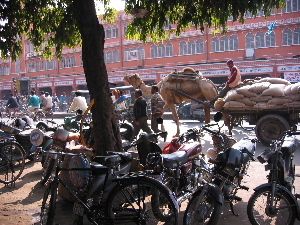 |
The inside of museums are a quiet sanctuary
by comparison. This is the palace museum in Jaipur. The maharaja's
family still live in a section of the palace.
|
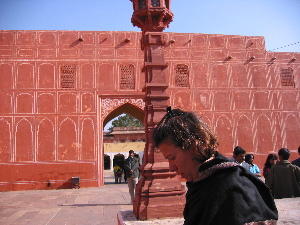 |
This massive silver urn is almost as tall as
I am. It was used to carry Ganges water for the Maharaja on his trip to
London. Love that reflection.
|
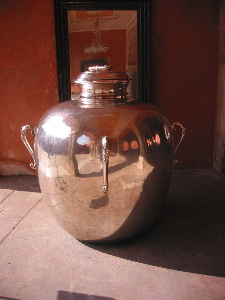 |
This is one of five
observatories that Raja Sawai Jai Singh II built around 1827. He was
inspired by the Turkish royal astronomer, Ulugh Beg who built an
observatory in Samarkand in the 15th century.
|
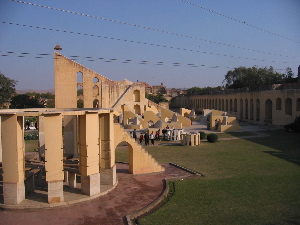 |
Most of the instruments look like giant
sundials. This is a cluster of 12 small instruments, one for each zodiac
sign.
|
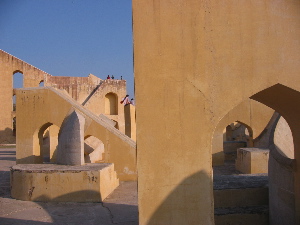 |
The largest instrument is this 89 foot high
sundial, the Samrat Yantra. The shadow on the curved structure to the
right indicates the time, accurate to about 2 seconds.
|
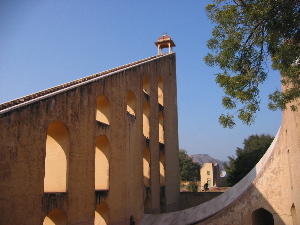 |
At one point, we stop at a lassi walla for a
cool refreshing yoghurt drink. It is amazing. The lassis are served in
those stacked brown glasses, which are disposable terra cotta. The lassi
comes with a slab of cream on top. If it were hotter out, the lassi
might have ice in it, but not on cold days like this. He mixes the
yoghurt in a bowl with a mixer that looks like a re-purposed drill press.
|
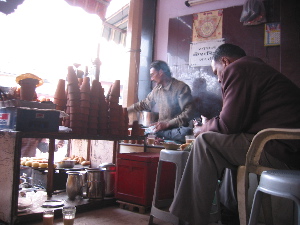 |
Here, Julie is 235 kms from Agra and 2 kms
from Jaipur city centre on National Highway number 11. These signs are
the landmarks that I navigate by on the highway.
|
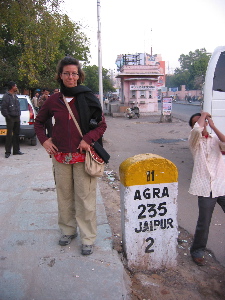 |
|
|
|
|
|
|















